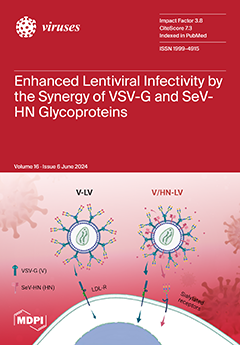Background: The Tripartite motif (TRIM) family includes more than 80 distinct human genes. Their function has been implicated in regulating important cellular processes, including intracellular signaling, transcription, autophagy, and innate immunity. During viral infections, macrophages are key components of innate immunity that produce
[...] Read more.
Background: The Tripartite motif (TRIM) family includes more than 80 distinct human genes. Their function has been implicated in regulating important cellular processes, including intracellular signaling, transcription, autophagy, and innate immunity. During viral infections, macrophages are key components of innate immunity that produce interferons (IFNs) and IL27. We recently published that IL27 and IFNs induce transcriptional changes in various genes, including those involved in JAK-STAT signaling. Furthermore, IL27 and IFNs share proinflammatory and antiviral pathways in monocyte-derived macrophages (MDMs), resulting in both common and unique expression of inflammatory factors and IFN-stimulated genes (ISGs) encoding antiviral proteins. Interestingly, many TRIM proteins have been recognized as ISGs in recent years. Although it is already very well described that TRIM expression is induced by IFNs, it is not fully understood whether TRIM genes are induced in macrophages by IL27. Therefore, in this study, we examined the effect of stimulation with IL27 and type I, II, and III IFNs on the mRNA expression profiles of TRIM genes in MDMs. Methods: We used bulk RNA-seq to examine the TRIM expression profile of MDMs treated with IFNs or IL27. Initially, we characterized the expression patterns of different TRIM subfamilies using a heatmap. Subsequently, a volcano plot was employed to identify commonly differentially expressed TRIM genes. Additionally, we conducted gene ontology analysis with ClueGO to explore the biological processes of the regulated TRIMs, created a gene-gene interaction network using GeneMANIA, and examined protein-protein interactions with the STRING database. Finally, RNA-seq data was validated using RT-qPCR. Furthermore, the effect of IL27 on Mayaro virus replication was also evaluated. Results: We found that IL27, similar to IFNs, upregulates several TRIM genes’ expression in human macrophages. Specifically, we identified three common TRIM genes (
TRIM19,
21, and
22) induced by IL27 and all types of human IFNs. Additionally, we performed the first report of transcriptional regulation of
TRIM19,
21,
22, and
69 genes in response to IL27. The TRIMs involved a broad range of biological processes, including defense response to viruses, viral life cycle regulation, and negative regulation of viral processes. In addition, we observed a decrease in Mayaro virus replication in MDMs previously treated with IL27. Conclusions: Our results show that IL27, like IFNs, modulates the transcriptional expression of different TRIM-family members involved in the induction of innate immunity and an antiviral response. In addition, the functional analysis demonstrated that, like IFN, IL27 reduced Mayaro virus replication in MDMs. This implies that IL27 and IFNs share many similarities at a functional level. Moreover, identifying distinct TRIM groups and their differential expressions in response to IL27 provides new insights into the regulatory mechanisms underlying the antiviral response in human macrophages.
Full article






